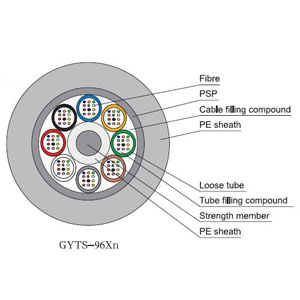-

- Sopto Home
-

- Special Topic
-

- Fiber Optics knowledge
-

- Calculating the Propagation of Light Based on Modes
Fiber Optics knowledge
- Maintained Methods of Fusion Splicer Parts
- How to Use the Fiber Optic Cleaver?
- What are Fixed Attenuators & Variable Attenuators?
- Deployable Fiber Optic Systems for Harsh Mining Environments
- Developing Miniature Fiber Optic Cable Has Become the Trend
- Fiber Optic Cleaning Procedures
- 6 Steps to Selecting a Fiber Optic Cable
- Signal Attenuation Introduction
- How Fiber Transmission Works?
SOPTO Special Topic
Certificate



Guarantee
Except products belongs to Bargain Shop section, all products are warranted by SOPTO only to purchasers for resale or for use in business or original equipment manufacturer, against defects in workmanship or materials under normal use (consumables, normal tear and wear excluded) for one year after date of purchase from SOPTO, unless otherwise stated...
Return Policies
Defective products will be accepted for exchange, at our discretion, within 14 days from receipt. Buyer might be requested to return the defective products to SOPTO for verification or authorized service location, as SOPTO designated, shipping costs prepaid. .....
Applications
Fiber Optis can be used in so many fields:
Data Storage Equipment
Interconnects,Networking
Gigabit Ethernet
FTTx, HDTV,CATV
Aerospace & Avionics
Data Transfer Tests
Network Equipment
Broadcast Automotive
Electronics,Sensing
Oil & Gas, Imaging
Outside Plant,Central Office
Harsh Environment
Data Transmission
Illumination,Institutions
Ship to Shore,Education
Simulation,Military,Space
Unmanned Aerial Vehicles
Semiconductor Equipment
Diagnostics & Troubleshooting
Premise Networks Carrier Networks
Independent Telecommunication Providers
SOPTO Products
- Fiber Optic Transceiver Module
- High Speed Cable
- Fiber Optical Cable
- Fiber Optical Patch Cords
- Splitter CWDM DWDM
- PON Solution
- FTTH Box ODF Closure
- PCI-E Network Card
- Network Cables
- Fiber Optical Adapter
- Fiber Optical Attenuator
- Fiber Media Converter
- PDH Multiplexers
- Protocol Converter
- Digital Video Multiplexer
- Fiber Optical Tools
- Compatible
Performance Feature
Fiber Optics knowledge
Recommended


Calculating the Propagation of Light Based on Modes
Using the calculated set of mode, one can calculate the resulting field profile for an arbitrary input profile after any distance of propagation in the fiber:
-
First, calculate the excitation amplitudes of all guided modes via complex overlap integrals of the input amplitude profile with the complex conjugates of all mode amplitude profile.
-
Then change the complex amplitudes of all modes according to their β values.
-
Construct the final beam profile by adding up all contributions from the modes.
Note that this procedure is not computationally difficult, unless the fiber has a huge number of modes and/or complicated modes in case of an index profile which is not radially symmetric. The amount of computations does not depend on the propagation distance. (For numerical beam propagation, longer distances would generally require more time.)

There are cases where mode coupling calculations are helpful. For example, one may calculate the modes of an “undisturbed” fiber and then calculate mode coupling caused by some additional effect. For example, a periodic index modulation in a fiber Bragg grating can couple counter propagating or copropagating modes.
Limitations of the Mode Approach
The concept of modes is often very convenient for doing calculations, as shown above. However, it also has its limitations:
- In some cases – for example, for arbitrary index profiles – the modes are very difficult to compute.
- In cases with a huge number of modes, it may also not be convenient to do calculations based on them. Note: if cladding modes need to be taken into account, one would end up with a huge number of modes in the calculation, even if the core has only few guided modes.
- Additional disturbances such as bending already make the calculation of modes much more difficult.
- The concept is also at least more difficult to apply if the mode properties change along the length of a fiber – for example, for tapered fibers.
For such reasons, direct numerical beam propagation is often required instead of the mode concept.
For more products’ information, please browse our website or contact a Sopto representative by calling 86-755-36946668, or by sending an email to info@sopto.com.





-180x180.JPG)
